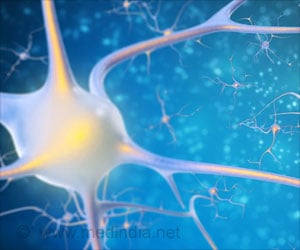
‘The structure and function of the blood brain barrier is dependent upon the complex interplay between the different cell types and the extracellular matrix of the brain and blood flow in the capillaries.’
Tweet it Now
But for treating diseases of the central nervous system and cancers such as glioblastoma, it's essential to get drugs across this barrier and deliver them to where they are needed most. Current research models that are used to study or imitate the blood-brain barrier have a number of limitations. Investigators at Brigham and Women's Hospital have developed an innovative but easily implemented approach that uses "spheroids" to mimic the blood-brain barrier more accurately, and appears to overcome several challenges for discovering and advancing new drugs for treating brain conditions. They report their results June 6 in Nature Communications. "Our model takes a new approach to mimic the blood-brain barrier outside of a living system. These miniature spheroids are relatively straightforward to culture, and yet it is able to reproduce many of the key blood-brain barrier properties and functions," said lead author Choi-Fong Cho, PhD, of the Department of Neurosurgery. "Our hope is that these findings will further advance neuroscience research and expedite the discovery and design of brain-penetrant drugs to treat diseases of the brain and central nervous system."
Current models of the blood-brain barrier rely largely on either animal models which are expensive, laborious and can only be used to test a limited number of compounds at a time or cells grown in the lab. For the latter, it's very difficult to replicate the conditions found in the human body. Cells are often grown on flat plastic surfaces, isolated by cell type, and may become less and less like the unique cells found in the brain over time.
The new technique grows different kinds of brain cells endothelial cells, pericytes and astrocytes together, allowing them to spontaneously form multicellular spheroids. These self-assembled structures closely resemble the blood-brain barrier organization and can be used to predict drug penetration capabilities molecules that can penetrate the surface of the spheres and accumulate inside are more likely to be able to penetrate the blood-brain barrier and enter the brain in a living organism.
The research team performed several tests on these spheroids to establish some of the key properties of the blood-brain barrier that allow it to restrict the influx of foreign molecules. The spheroid model scored much better on many of these properties than the standard model in use today. The team also used the spheroids to identify new brain-penetrant molecules, which could hold high potential for delivering therapeutics across the blood-brain barrier.
Advertisement
Source-Eurekalert










